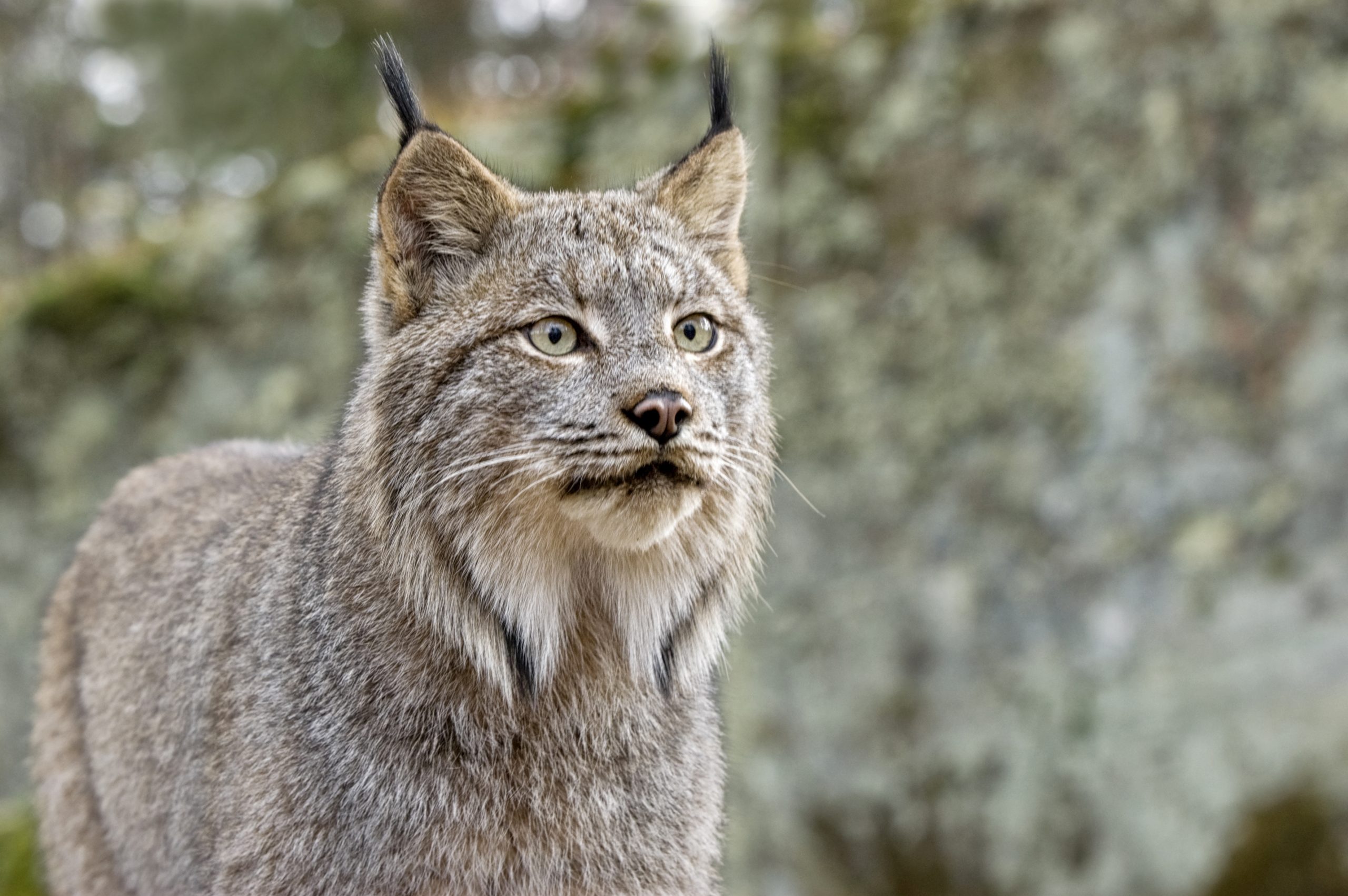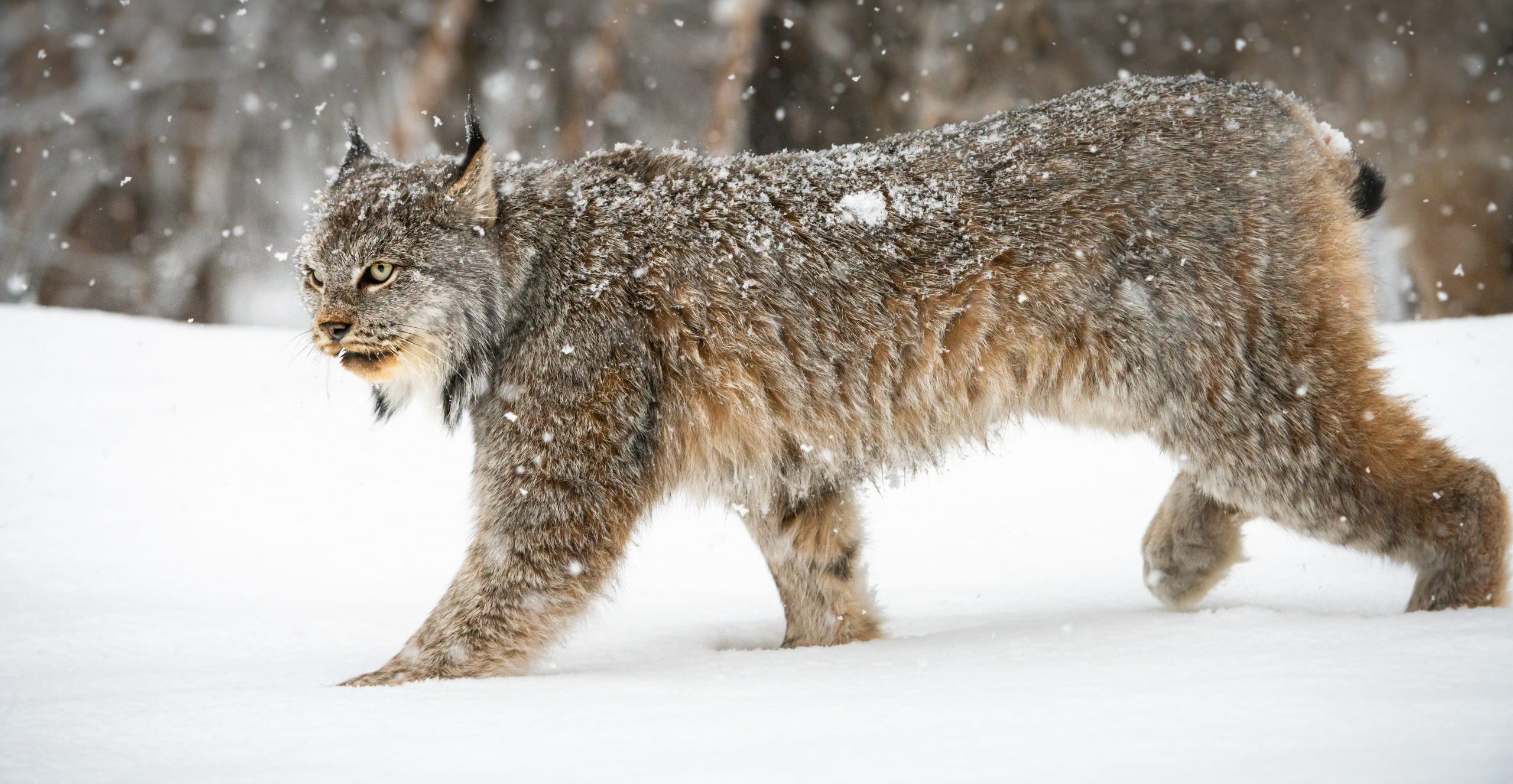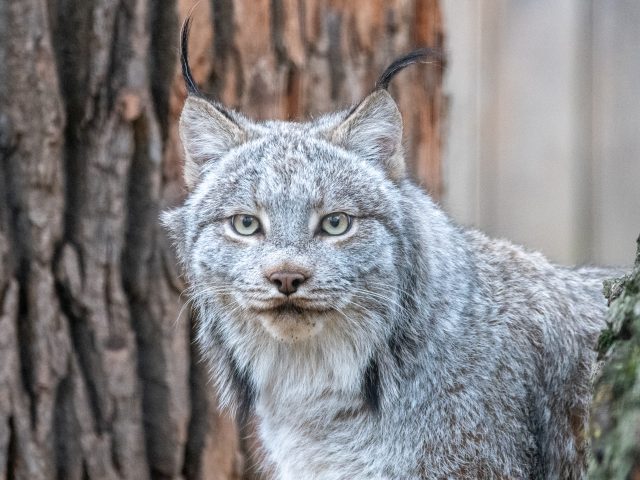Range
Northern North America
Habitat
Boreal forest with dense undergrowth
Behavior
Hunting in deep snow is difficult, even with long legs and big feet. Instead of chasing snowshoe hares, lynx hunt by stalking and ambushing their prey. They may lie in wait for hours waiting for a hare to pass by at which point they will leap into action. One lynx can consume up to 200 hare per year.
Lynx are nocturnal and use their eyes and ears to hunt. When snowshoe hare are scarce, a lynx will eat squirrels, grouse, voles and other small rodents. As carnivores, lynx only eat meat.
Like most cat species, lynx are solitary and often territorial. While females may have overlapping territories, male lynx do not. The exception to their solitary lifestyle is a female lynx with kittens. Litters average 2-3 kittens and the young stay with their mother until the next breeding season. During that time, she will provide all parental care and teach them to hunt, sometimes engaging in cooperative hunting.
Lynx are the only wild cat known to experience prey driven population declines and growth. When the population of snowshoe hare drops, so does the population of lynx a few years later.
Conservation
In the United States, Canada Lynx were historically found in 25 states. Today, they are only found in a handful of states.
Aggressive logging, road-building and development of lynx habitat has severely fragmented their living space. Snowmobile trails and roads pose problems for lynx because these packed-snow pathways give access to cougar, wolves and coyote (which eat lynx), and bobcat (which compete with lynx).
Lynx are adapted to the natural fire cycle of lodgepole pines. Fire opens the pinecones, which release seeds to create supple new shoots that feed snowshoe hares. When this forest fire cycle is disturbed, the snowshoe hare population will decline and thus the lynx is negatively affected.






